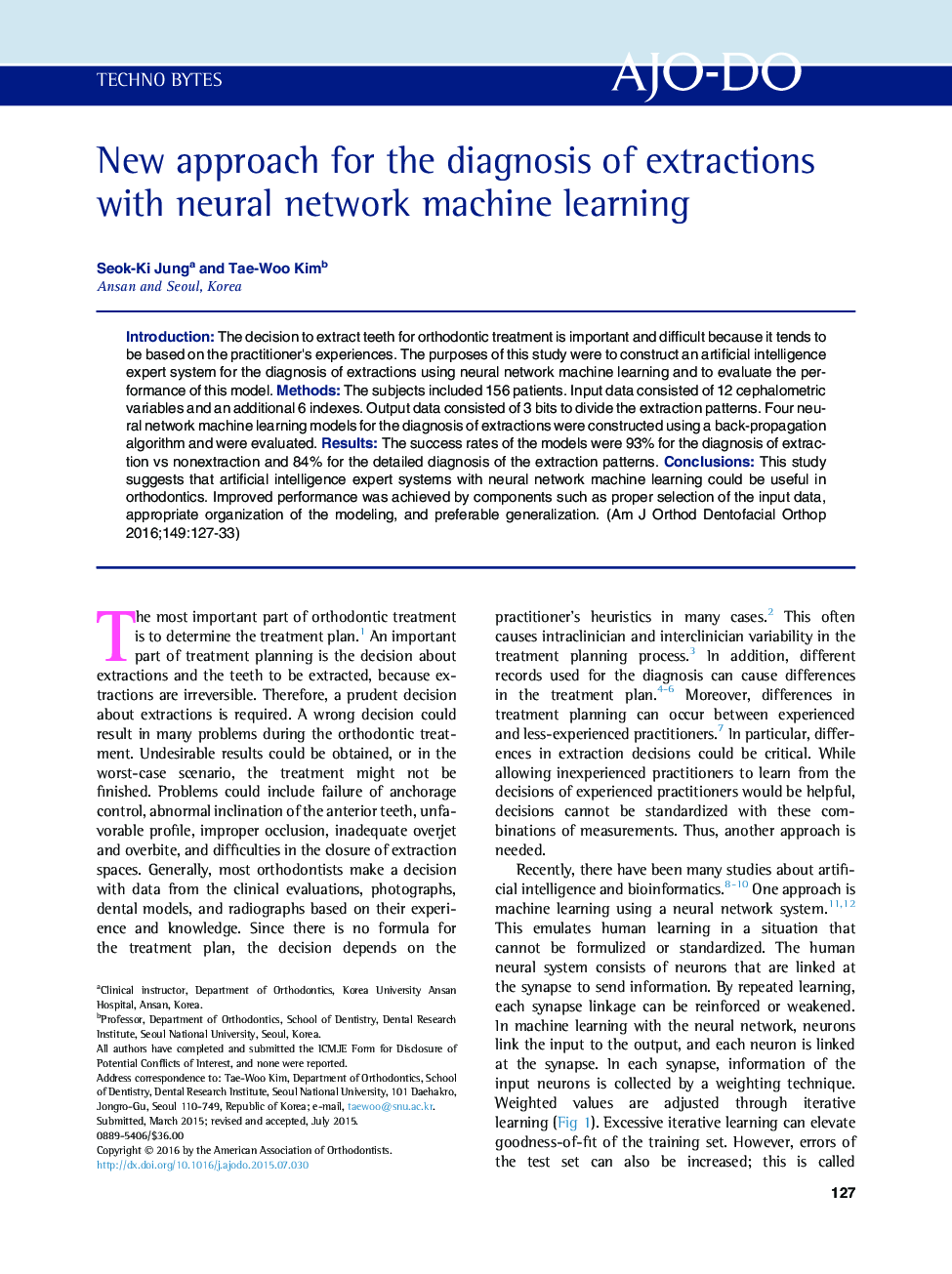| Article ID | Journal | Published Year | Pages | File Type |
|---|---|---|---|---|
| 3115766 | American Journal of Orthodontics and Dentofacial Orthopedics | 2016 | 7 Pages |
•The diagnosis of extractions is important in orthodontic treatment planning.•Machine learning has been used for many decision-making processes.•Artificial intelligence models made with machine learning did well in diagnosis of extractions.•Neural network machine learning could be useful in various areas of orthodontics.
IntroductionThe decision to extract teeth for orthodontic treatment is important and difficult because it tends to be based on the practitioner's experiences. The purposes of this study were to construct an artificial intelligence expert system for the diagnosis of extractions using neural network machine learning and to evaluate the performance of this model.MethodsThe subjects included 156 patients. Input data consisted of 12 cephalometric variables and an additional 6 indexes. Output data consisted of 3 bits to divide the extraction patterns. Four neural network machine learning models for the diagnosis of extractions were constructed using a back-propagation algorithm and were evaluated.ResultsThe success rates of the models were 93% for the diagnosis of extraction vs nonextraction and 84% for the detailed diagnosis of the extraction patterns.ConclusionsThis study suggests that artificial intelligence expert systems with neural network machine learning could be useful in orthodontics. Improved performance was achieved by components such as proper selection of the input data, appropriate organization of the modeling, and preferable generalization.
